Blueberries grow best in a sunny spot with well-drained soil. Plants will bear partial shade, preferring the sun for at least six hours daily. Avoid tree-surrounded areas, which provide too much shade, compete with plants for water and nutrients, and interfere with air movement around plants. Soil preparation is crucial for the health of Blueberry plants.
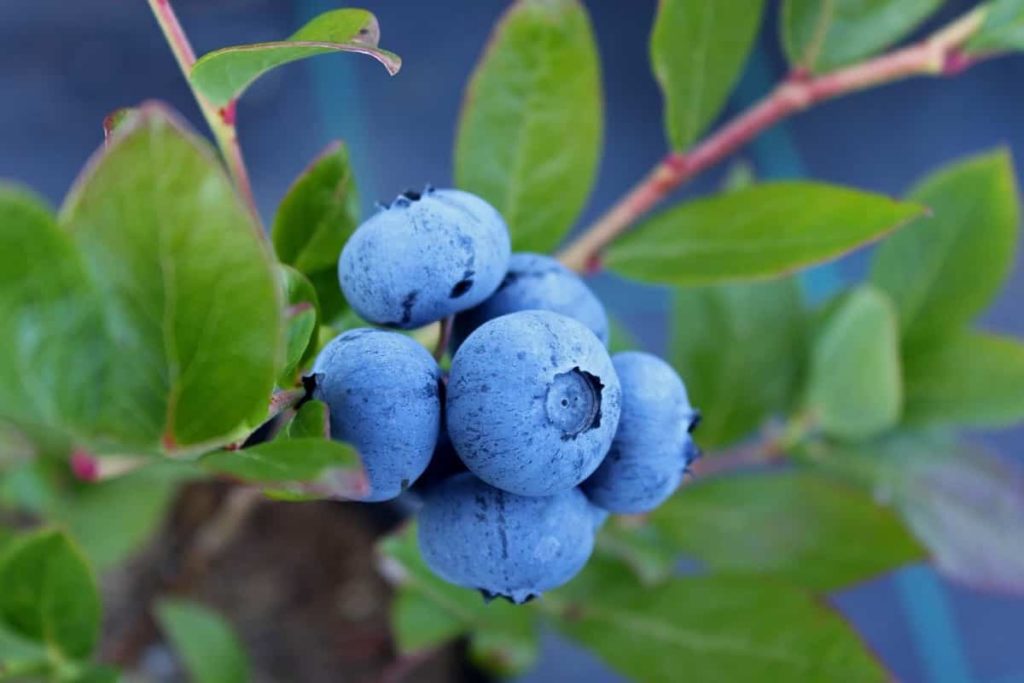
Blueberries prefer acidic soils, and if the soil in your area is not acidic enough, you may need to make adjustments. Planning is very important; if changes to your soil’s pH level are necessary, make it a year before planting your Blueberries. Blueberries usually work best if their soil contains organic matter that provides both macronutrients and micronutrients.
How to prepare the soil for Blueberry trees
Soil pH for Blueberries
If a Blueberry bush is not performing well in a home garden, it’s the soil that’s to blame. If the Blueberry soil pH is too high, the Blueberry bush won’t grow well. Take steps to test your Blueberry soil pH levels; if it is too high, reducing the pH of Blueberry soil will significantly affect how well you grow Blueberries. Most fruit and vegetable plants have relatively neutral soil pH between about 6.5 to 7.5.
Growing Blueberries between 6.5 to 7.5 will cause slow, weak growth, yellow leaves, and very little fruit. Reducing pH before planting and keeping it low for plant age will help ensure strong fruit production and healthy plants. The pH is modified by adding sulfur to the soil through sphagnum peat moss, elemental sulfur, or another widely available sulfur modification found at garden shops. If your soil pH is above 5.5, most likely, it will need to be modified before planting Blueberries.
Generally, the higher the pH, the more sulfur will be modified, which must be increased. The estimated soil structure and organic matter percentage in your soil testing report will also help you determine how much modification to apply. High organic matter soil needs a large amount of sulfur to change the pH. It is better to modify the soil pH before planting, as it takes several months for the pH to change after applying sulfur.
It depends on the soil pH and soil type to decide the amount of sulfur to apply. However, if you plan to plant spring and haven’t modified your soil yet, the best option right now is to add acidic growing mediums like sphagnum peat to your plantation area. It is a suitable method if the original pH is between 5.5 to 7.0, it is a suitable method. To do this, add 4 to 6 inches of sphagnum peat 6 to 8 inches above the soil where you will plant the Blueberries.
In case you missed it: 17 Common Blueberry Plant Problems: How to Fix Them, Solutions, and Treatment
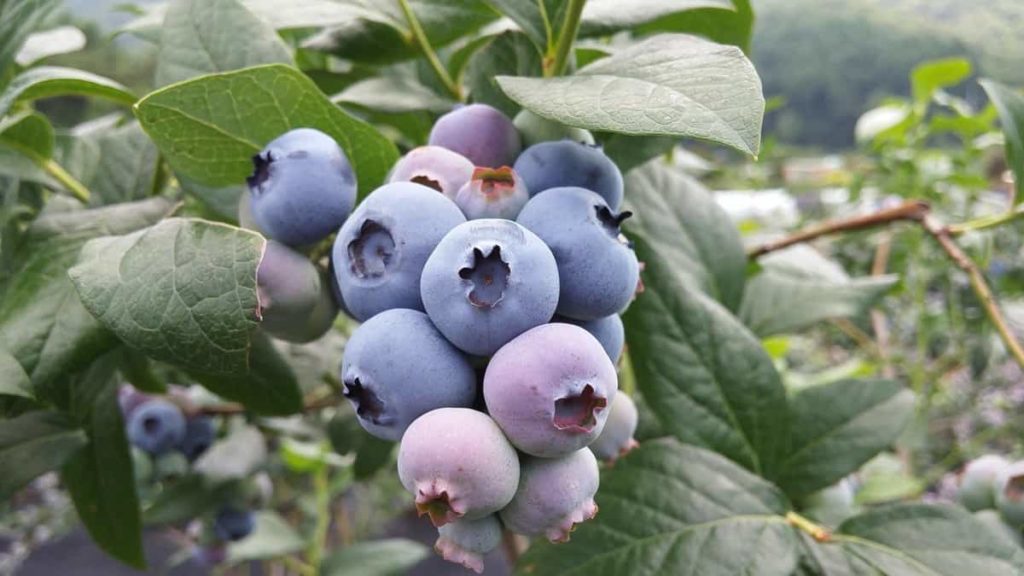
The roots will spread out, so modifying the soil into a 2 to 3 feet wide strip is essential to ensure that the roots have access to acidic soil. Coffee grounds are not necessarily acidic and should not be relied upon as pH modification for Blueberries. Even if the coffee ground you use becomes acidic, it will probably need a large amount of them to change soil pH, and the results will not be reliable.
Preparation of soil for growing Blueberries in pots
Blueberries grow well in containers, and if they have the right state of the soil, it’s easy to grow Blueberries and reward you with bundles of dark berries. The most important condition to be right is their soil structure. Growing acid-loving Blueberries in containers, acid potting soil mixture, or a 50/50 mixture of peat and potting soil.
You can also use prepared acid soil mix for Rhododendron, Azaleas, and Camellia, but do not use any mix that has Redwood sawdust as a component. It is not recommended for Blueberries. You should monitor soil pH throughout the year with the pH test kit. Use fertilizers that gently increase soil acidities, such as cotton seed meal or other acid mixes. Add a small amount of fertilizer from early spring to the end of summer as per the instructions on the label.
Preparation of soil for growing Blueberries on grounds
Blueberries are a fruit-producing bush that benefits from taking the time to prepare the soil before planting. An acidic soil rich in organic matter is preferred. Plan and start preparing the soil in the fall to allow amendments to adjust or improve the soil. Annual soil maintenance keeps soil pH and organic value at the best level for berry production. Check the soil pH with the kit six months before the required planting date to determine the current level.
Reduce pH by spreading ground rock sulfur on the area using application instructions on the bag based on the existing pH of the soil. Spread about 3 inches of sphagnum peat moss on the plantation area to enhance organic matter. Work with soil modifications with the tiller. Smooth the area with a rake, and let it rest for three to six months to give the modification time to adjust the pH. 3 to 4 inches of organic compost in the planting area before planting Blueberries in spring to help control soil nutrients and moisture.
How to grow Blueberries in clay soil
Choose a plantation site for your Blueberry with full sun. Although a site with well-drained, sandy soil is ideal, if you have to work with clay soil, identify a site you can prepare several months before planting to give you time to work at pH level. Clay soil takes more time to respond to pH changes. Modify the soil to prepare for planting. Reduce soil pH using sphagnum peat, which is also a good source of organic matter.
Add 2 inches of sphagnum peat over the soil and work it 12 inches on top. There are other options for reducing pH are granular and iron sulfate. Dig a 4-feet wide 2 feet deep hole for each plant so that there is enough room to establish yourself in the roots. Some clay soils may be sticky and difficult for roots to pass through. If digging in the soil is too difficult or time-consuming, make a raised bed for your Blueberries.
In case you missed it: How To Start Blueberry Garden, Tips, and Techniques
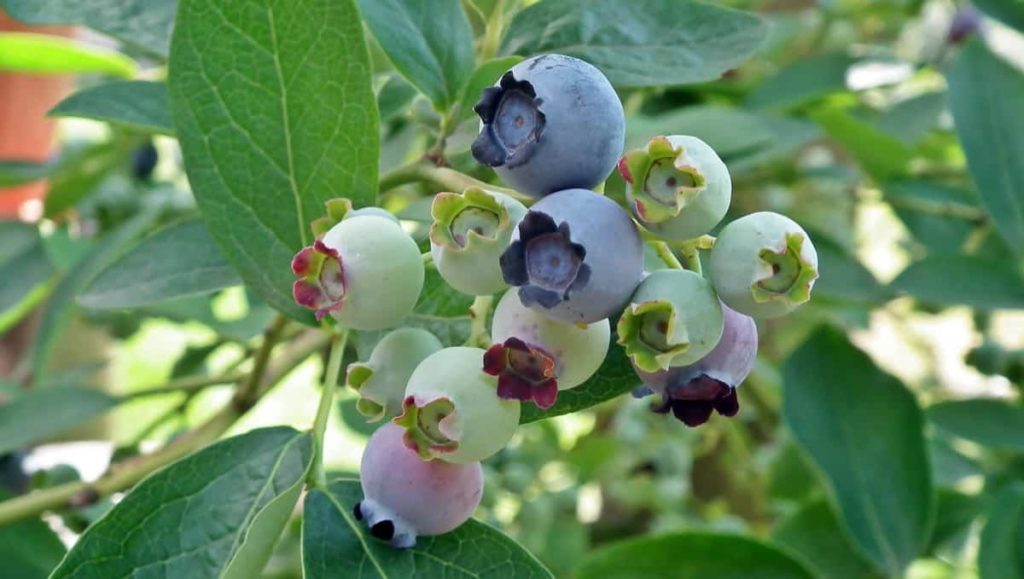
Fill the raised bed with 4 bushels of peat, 2 bushels of loam soil, and 2 cups of sulfur. After planting them, add 4 to 6 inches of mulch, pine bark chips, or pine needles around the Blueberry bushes. This will continue adding organic matter to the soil, preventing weeds, and making irrigation more effective. Do not apply fertilizers when you plant.
Soil composting for Blueberries
Check a soil sample before planting Blueberries in the garden soil. Collect soil samples a year or more in advance. It provides adequate time to modify the soil if necessary. Take samples from the top 12 to 18 inches of soil, where the roots will grow. Blueberry plants grow best in soils with a relatively high organic matter with good aeration and drainage. You can increase soil’s organic matter by adding proper material before planting. Choose organic amendments with only low pH.
Many organic materials commonly available to the home gardener have a very high pH for Blueberry plants. Any manure based on the yard or plant-based and animal composts has a pH above 7. Manures and some composts, such as mushrooms, often have more Blueberry plants that are sensitive to more salts. For these reasons, adding yard debris, mushrooms, or animal-based compost is not recommended before planting Blueberries.
The best materials to use as organic modifications are sawdust or bark from Douglas fir, pine, and most hardwoods; their pH is 4.0 to 4.5. Avoid using fresh cedar or redwood tree sawdust or bark, as these can injure young Blueberry plants. You can use peat moss as part of a soil mix in containers or raised beds, as it is quite acidic, but it is very expensive to use extensively.
Land preparation for Blueberries
Prepare soil through tillage to give a weed-free plantation area. Green manure crop, such as rye or wheat planting, is recommended to fall before planting Blueberries and cultivated under it in spring. You should place Blueberry bushes in a row about four to five feet apart; you should keep adjacent rows at a distance of nine to ten feet to provide sufficient room for harvesting. Spread the roots of bare-roots plants into a hole, then cover them with soil and ensure the root ball is not more than 1/2 inches below the soil surface.
Plant the Blueberries grown in the container to the same depth as in the nursery pot. Blueberries are strong plants and usually do not need any supporting structures. Fill the soil firmly around the roots, then mix the planting with 2 to 4 inches of sawdust, peat moss, or chopped straw. Surface mulch helps maintain uniform soil moisture and good soil structure and lowers soil temperature in summer. Refill the mulch as needed. Give water to planting often, so the soil remains moist, but the planting is not saturated for the rest of your life.
Best soil mix for Blueberries
To minimize the stress on root growth, add the peat moss, chopped bark, or cocopeat to 50% of the total soil volume and allow excess water to drain away from plant roots. The best soil for Blueberries in pots combines three parts for potting soil, 1 part perlite, and 1 part pine bark for light, quick-drainage, healthy soil. To avoid moisture-related disease or rot, you should keep mulch from the plant base.
In case you missed it: Goji Berry Growing Tips, Techniques, and Secrets
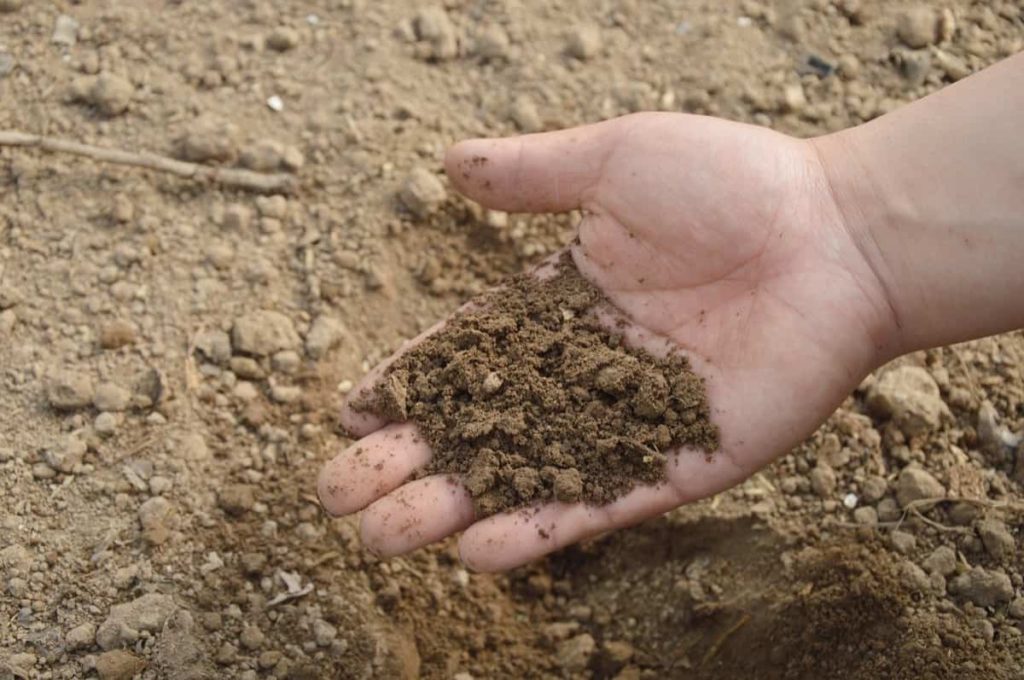
Soil recipe for Blueberries
To start with the right soil mix, fill your pot two-thirds with regular potting mix, adding a potting mix made for acid-loving plants such as Rhododendrons, Azaleas, and Camellia. If you are not getting high acid potting mix, add a mixture of fertilizer designed for acid-loving plants in one-third of the soil instead. Suppose you have difficulty finding commercial potting soil for acid-loving plants.
Mix peat moss and vermiculite in equal parts, then add to a granule fertilizer. Check the soil’s pH level using the test kit, and adjust the pH level by adding limestone to increase pH or iron sulfate to reduce pH. An equally effective potting mix uses equal parts of garden soil, well-rotten manure, and thick sand. Check the pH balance of the mixture, and add iron sulfate as needed to increase acidity.
Natural soil amendments for Blueberries
For extra nutrition, and since Blueberries have both shallow and delicate roots, your Blueberries perform two essential functions for containers by adding organic matter to the soil. Peat moss or chopped bark contributes to soil acidity but also provides the need for loose, light Blueberry roots to grow well. Add a single layer of mulch after planting: Evergreen wooden chips, sawdust, and pine needles will help keep the soil acidic.
To get the right soil pH to grow Blueberries, it’s better to modify the soil before you plan to plant. You can mix garden or aluminum sulfur in the top six inches of soil to reduce the pH as needed. It is wise to retest your soil before planting to ensure you have achieved the best results. Continue to modify the soil from time to time as the soil returns to its original pH. Yellowing of Blueberry leaves is also common.
In case you missed it: Best Fertilizers for Strawberries: Homemade, Organic, Compost, Liquid, NPK Ratio, and Schedule
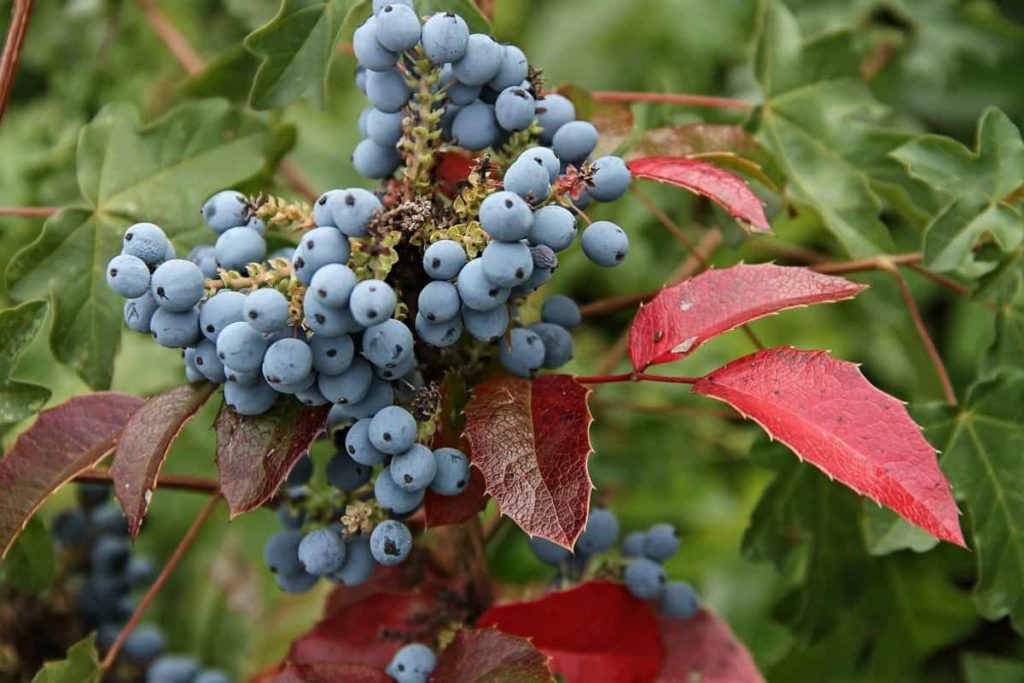
Although it is usually a sign of iron deficiency, it is probably not caused by iron deficiency in the soil. More likely, this sign suggests that the soil pH is too high, and Blueberry plants cannot access the iron available in the soil. Check the soil pH and adjust as needed if you see yellow leaves deteriorating. Mix the same parts of compost and native soil at a depth of 18 inches in the area where you want to apply Blueberries.
Compost made from rotten yard debris and vegetable waste feeds microorganisms in the soil, increases drainage, and encourages worms. Sphagnum peat moss is another organic modification you can mix with native soil when planting. Wet the peat moss well in a bucket or wheelbarrow before mixing it with soil. Peat moss helps in acidifying soil and improving drainage. If your soil is compact or consists mainly of clay, improve its drainage by adding fine chicken grit, pumice, or fine gravel.
Mix 1 part of the grit to 3 parts of the soil at a depth of 18 inches. Blueberries need regular, deep water, but they also need good drainage. Composted dairy manure or chicken manure will help increase the soil’s nutritional content, feeding microorganisms that benefit Blueberry roots. Mix the manure with soil in proportion to 3 parts soil from 1 portion. Once Blueberries are established, top the soil yearly with composted manure for extra nutrition.
What to do with soil when growing Blueberries
There are some of the best companions are cover crops for Blueberries. Many of them work best if you grow them and plow them well before planting Blueberries. Cover crops also improve soil structure by adding organic matter. Good Blueberry cover crops for pre-planting include grass and grains. Since these Blueberry companions have low nitrogen intake, spring Blueberries plow under fall before planting.
If you grow legumes as your Blueberry cover crop, you can plow them in a month for 30 days before planting berries. The best companion for the Blueberry plant is a Rhododendron, as these plants also thrive in sun and acidic soil. Rhodies are generous with their beautiful flowers, adding decorative value to your garden. During the summer heat, rhododendron leaves valuable shade to sensitive Blueberry roots. It means that they are great Blueberry bush companions.
Herbs also make good companions to Blueberry plants. Basil enjoys moderate acidic soil and is only about 2 feet long, so it won’t cast your Blueberries into the shade. Thyme is another herb that works well and looks beautiful around Blueberry bushes. It tolerates moderate acidic soil and offers clusters of small, purple flowers in early summer. Other acidic soil plants include Yew, Pine trees, and Grape Hyacinth. Moreover, tolerant plants, such as Catchflies, work well with Blueberry plants according to different soil and pH types.
In case you missed it: Growing Strawberries In Greenhouse – Polyhouse

Conclusion
Blueberries are one of the easiest fruits anyone can draw. These fruits are one of the best natural superfoods filled with essential nutrients. Depending on the types you choose to grow and your region, you can plant Blueberries in the fall or spring. The right soil conditions are the key to successfully growing Blueberry plants.
Blueberry will survive and produce for 40 to 50 years. Focusing on their ideal location and conditions in planting will guarantee you delicious fruits for many years. This article will tell you about the preparation of soil for Blueberries and the essential things you follow when preparing the soil for Blueberries.
- How to Grow Hibiscus from Flower
- Plantation Ideas for Home Decoration: A Beginners Guide
- Flower Garden Designs and Layouts for Beginners
- Planting and Spacing Techniques in Papaya: A Beginner’s Guide
- Growing Gold: Essential Techniques for Planting Pineapples
- How to Make Kalanchoe Plant Bushy: Home Remedies and Solutions
- 11 Reasons Why Your Gardenia is Not Blooming: Home Remedies and Solutions
- Eco Elegance: The Guide to Designing a Drought-Tolerant Landscape
- Gardening on a Slope: Strategies for Hillside Landscaping
- Nourish and Flourish: Top Organic Mulches for Thriving House Plants
- Everything You Want to Know about Indian Mogra Flower: Discover Uses and Growing
- Green Thumb Success: Expert Tips for Cultivating Greenhouse Pumpkins All Year Round
- Maximize Growth & Flavor: The Ultimate Guide to Companion Planting in Herb Gardens
- How to Control Rhododendron Problems Naturally: Home Remedies and Organic Ways to Fix Them
- Natural Magic: The Remarkable Benefits of Cinnamon for Plants
- Best Steps to Revive Dying Tulip with Natural and Organic Treatment
- 10 Reasons Why Your Angel Trumpet is Not Blooming: Remedies and Treatment
- How to Fix Periwinkle Leaf and Flower-Related Problems: Natural Remedies and Solutions
- How to Fix Zinnias Leaf and Flower Problems: Discover Natural and Home Remedies
- Organic Steps to Induce Lemon Tree Flowers: A Comprehensive Guide
- Bloom Booster: Crafting the Perfect Homemade Bougainvillea Fertilizer
- Optimizing Growth: A Guide to Applying NPK Fertilizer for Potted Plants
- 10 Best Homemade Fertilizers for Rubber Plant: DIY Recipes and Application Method
- How to Boost Female Pumpkin Flowers: Effective Steps for More Flowers and High Yields
- Transform Your Indoor Garden: Top Benefits of Pink Salt for Houseplants
- 10 Best Homemade Fertilizers for Peacock Plants (Calathea): Easy DIY Guide
- Unlock Blooms: 9 Reasons Why Your Potted Chrysanthemum is Not Blooming
- 8 Reasons Why Your Potted Hibiscus is Not Blooming: Fix it with Simple Solutions
- Unlock Blooms: 9 Key Reasons Your Potted Frangipani Won’t Flower
- 10 Reasons Why Is My Ice Plant Not Blooming: Remedies and Treatment
- 10 Reasons Why My Potted Hydrangea Not Blooming: Treatment and Remedies
- 10 Reasons Why is My Wisteria Not Blooming: Remedies and Treatment
- 10 Reasons Why is My Goldfish Plant Not Blooming: Remedies and Treatment
- Maximize Your Space: Ultimate Guide to Balcony Gardening with Grow Bags
- 10 Reasons Why Your Iris is Not Blooming: Remedies and Treatment
- 10 Reasons Why Your Anthurium Plant is Not Blooming: Treatment and Remedies